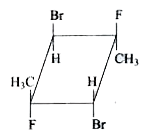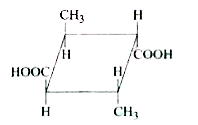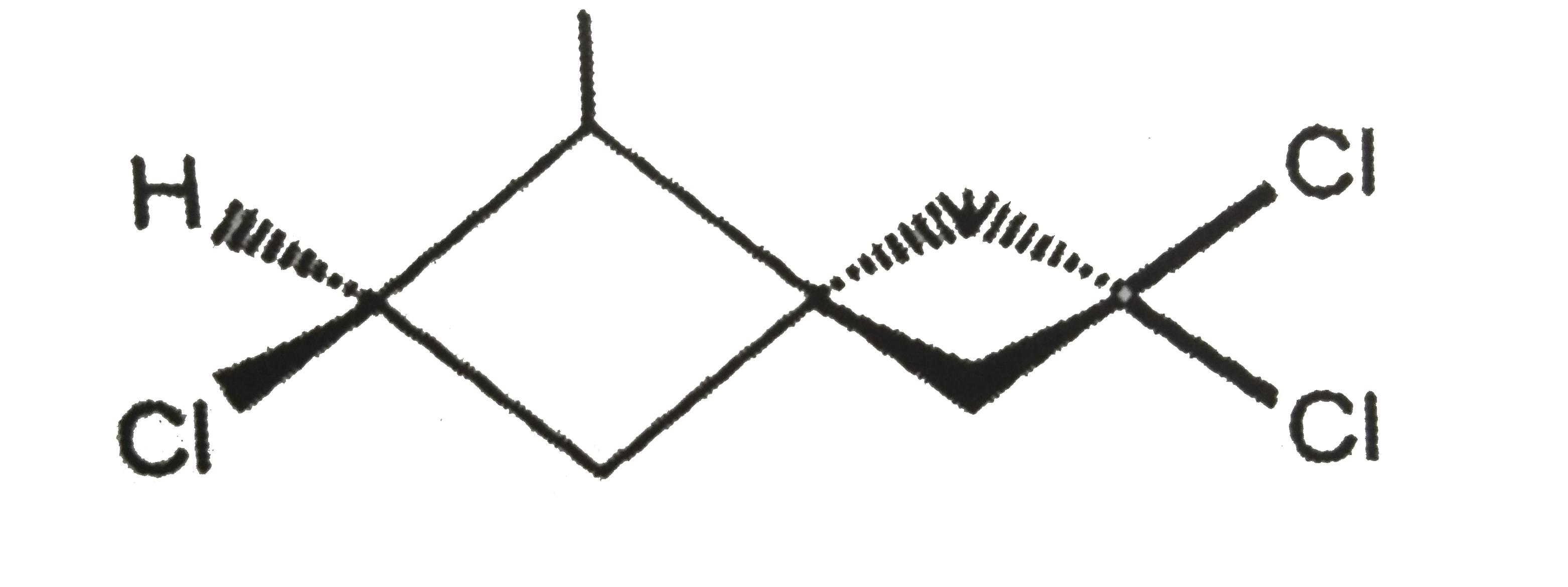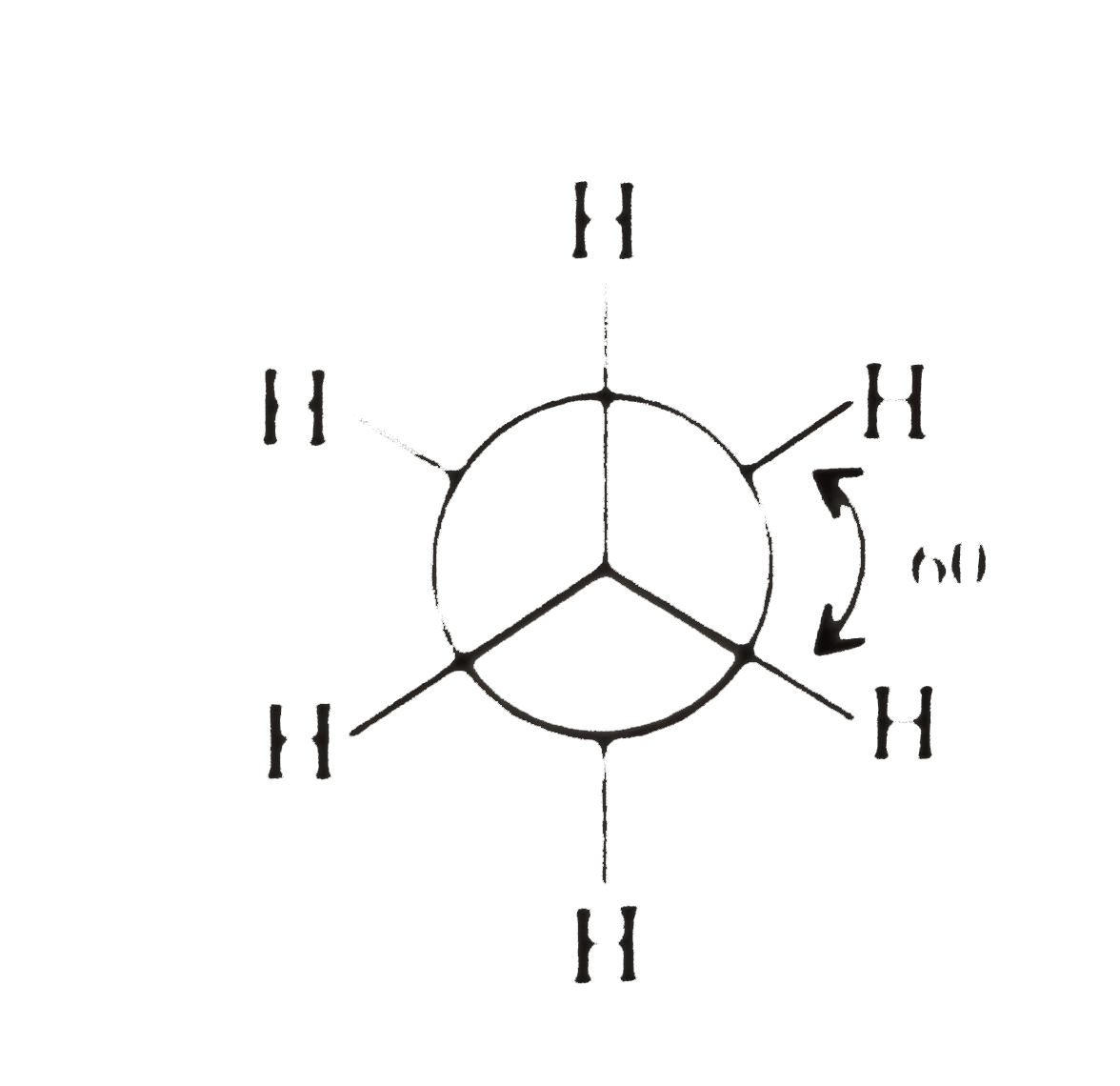The compound C2FCI Brl has
4 isomers
2 optical isomers
2 geometrical isomers
6 isomers
The correct Answer is:4
To solve the problem regarding the compound C2FClBrI and determine the number of isomers it has, we will analyze the types of isomers that can be formed, specifically focusing on geometrical and optical isomers.
1. Identify the Structure of the Compound:
The compound C2FClBrI consists of two carbon atoms (C) and four different halogen atoms (F, Cl, Br, I). The general formula suggests that we have a dihaloalkane with two different carbon atoms.
2. Determine the Possibility of Geometrical Isomers:
Geometrical isomers occur due to the restricted rotation around a double bond or due to the presence of different groups attached to the same carbon atoms. In this case, since we have four different substituents (F, Cl, Br, I) attached to the two carbon atoms, we can have geometrical isomers.
3. Check for Optical Isomers:
Optical isomers (enantiomers) are formed when a compound has a chiral center, which means it cannot be superimposed on its mirror image. For a compound to be optically active, it must not have a plane of symmetry. In the case of C2FClBrI, if we draw its structure, we can see that it has a plane of symmetry, making it optically inactive.
4. Count the Geometrical Isomers:
To count the geometrical isomers, we can arrange the four different halogen atoms around the two carbon atoms in various configurations. The arrangements can be done as follows:
- Place F, Cl, Br, and I in different positions around the carbon atoms.
- Ensure that no two groups are identical in each arrangement.
After systematically arranging the groups, we find that there are 6 unique configurations (isomers) that can be formed.
5. Conclusion:
Based on the analysis, we conclude that the compound C2FClBrI has:
- 6 geometrical isomers (option 4).
- No optical isomers due to the presence of a plane of symmetry.
Final Answer:
The compound C2FClBrI has a total of 6 isomers.
---
The compound C2FClBrI consists of two carbon atoms (C) and four different halogen atoms (F, Cl, Br, I). The general formula suggests that we have a dihaloalkane with two different carbon atoms.
Geometrical isomers occur due to the restricted rotation around a double bond or due to the presence of different groups attached to the same carbon atoms. In this case, since we have four different substituents (F, Cl, Br, I) attached to the two carbon atoms, we can have geometrical isomers.
Optical isomers (enantiomers) are formed when a compound has a chiral center, which means it cannot be superimposed on its mirror image. For a compound to be optically active, it must not have a plane of symmetry. In the case of C2FClBrI, if we draw its structure, we can see that it has a plane of symmetry, making it optically inactive.
To count the geometrical isomers, we can arrange the four different halogen atoms around the two carbon atoms in various configurations. The arrangements can be done as follows:
- Place F, Cl, Br, and I in different positions around the carbon atoms.
- Ensure that no two groups are identical in each arrangement.
Based on the analysis, we conclude that the compound C2FClBrI has:
- 6 geometrical isomers (option 4).
- No optical isomers due to the presence of a plane of symmetry.
The compound C2FClBrI has a total of 6 isomers.
Topper's Solved these Questions
- HALOALKANES AND HALOARENES BOOK - AAKASH INSTITUTE ENGLISHCHAPTER - HALOALKANES AND HALOARENES EXERCISE - Assignment (Section - C ) ( Objective Type Question(More than one options are correct ))
17 Videos
- HALOALKANES AND HALOARENES BOOK - AAKASH INSTITUTE ENGLISHCHAPTER - HALOALKANES AND HALOARENES EXERCISE - Assignment (Section - D) (Linked Comprehension Type Question )
8 Videos
- HALOALKANES AND HALOARENES BOOK - AAKASH INSTITUTE ENGLISHCHAPTER - HALOALKANES AND HALOARENES EXERCISE - Assignment (Section - A ) ( Competition Level Question )
50 Videos
- GENERAL PRINCIPLES AND PROCESSES OF ISOLATION OF ELEMENTSBOOK - AAKASH INSTITUTE ENGLISHCHAPTER - GENERAL PRINCIPLES AND PROCESSES OF ISOLATION OF ELEMENTSEXERCISE - Try Yourself
33 Videos
- HYDROCARBONSBOOK - AAKASH INSTITUTE ENGLISHCHAPTER - HYDROCARBONSEXERCISE - Assignment(Section - C) (Previous Years Questions)
60 Videos
Similar Questions
Knowledge Check
The compound has :
 Aplane of symmetryBaxis of symmetryCcenter of symmetryDno symmetry
Aplane of symmetryBaxis of symmetryCcenter of symmetryDno symmetry
The above compound has :Aplane of symmetryBaxis of symmetryCcenter of symmetryDnot any symmetryA compound C6H14O2 has two tertiary alcoholic groups . The IUPAC name of this compound is
A2,3-dimethyl -1, 2 - butanediolB3,3-dimethyl - 1 , 2 - butanediolC2,3-dimethyl-2 , 3-butanediolD2-methyl-2 , 3- pentanediol .
The empirical formula of the compound is C2H5. It has a vapour density of 29. Determine the relative mass of the compound and hence, its molecular formula.
View SolutionThe given compound (X) has:

View Solution
In the above compound, C2 is rotated clockwise 120∘ about C2−C3 bond. The resulting conformer is:
View SolutionIn the preparation of compounds of Xe, Bartlett has taken O+2PtF−6 as a base compound. This is becase
View SolutionA compound (A) C4H8Cl2 on hydrolysis gives a product (B) which forms a 2,4-DNP derivative, but does not reduce Tollen's reagent. The compound (A) has structure:
View Solution
